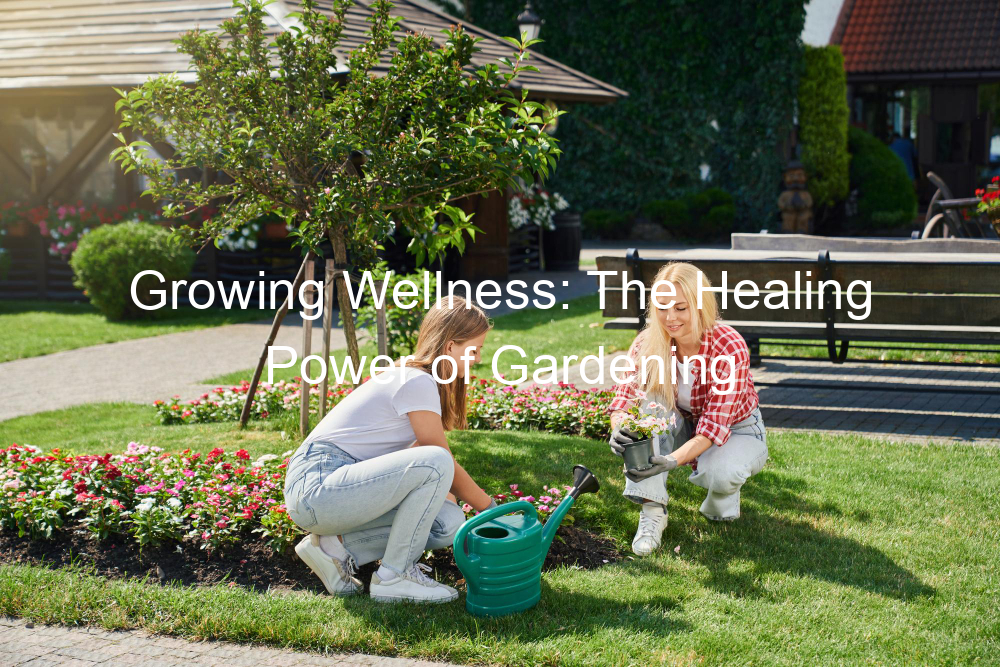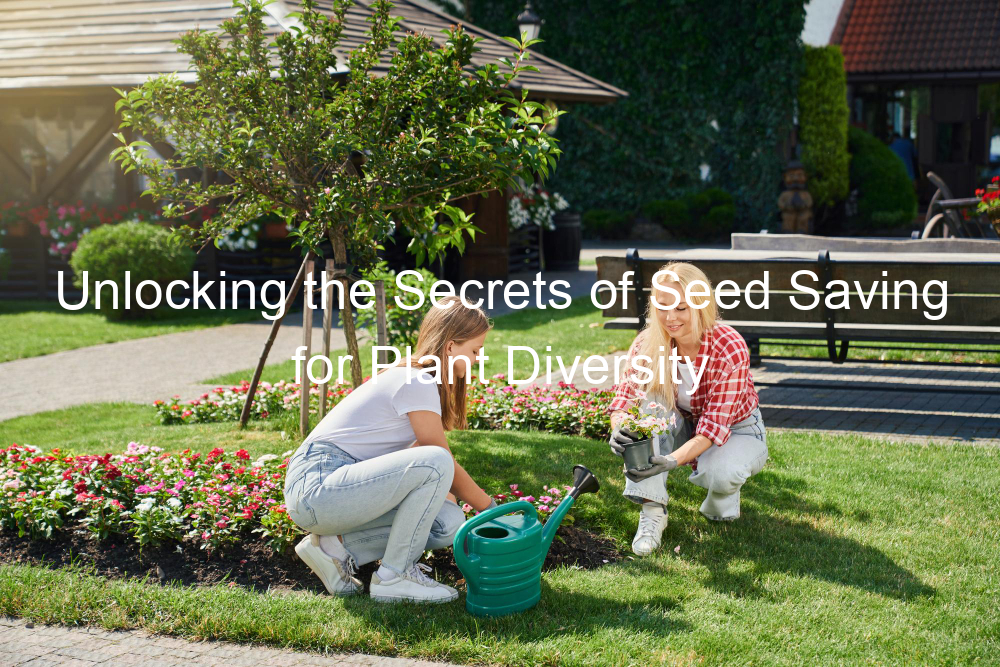Introduction to the Healing Power of Gardening
Have you ever wondered why people love gardening? It’s not just about the beautiful flowers and fresh vegetables. Gardening has a secret power – it can help us heal. This is called wellness gardening or horticulture therapy. Let’s learn more about these amazing concepts.
-
- Overview of the Concept of Wellness Gardening
Wellness gardening is a special kind of gardening that focuses on improving our health and well-being. It’s not just about growing plants. It’s about growing happiness and peace too. When we spend time in a garden, our body and mind can relax. We can breathe fresh air, enjoy the beauty of nature, and forget about our worries. This can help us feel better, both physically and emotionally.
-
- Introduction to Horticulture Therapy
Horticulture therapy is a type of treatment that uses plants and gardening activities to improve our health. It’s used in many places, like hospitals, schools, and retirement homes. People who do horticulture therapy can learn new skills, feel more confident, and improve their mood. It’s a fun and natural way to heal.
So, are you ready to discover the healing power of gardening? Let’s dig deeper and learn how gardening can help us live a healthier and happier life.
Health Benefits of Gardening
Gardening is not just a hobby or a way to beautify your surroundings. It’s also a fantastic way to improve your health. Let’s explore the physical health benefits that gardening can offer.
Physical Health Benefits of Gardening
When you engage in gardening activities, you are doing more than just planting seeds and watering plants. You are also taking steps to enhance your physical health in several ways.
-
- Improves Strength and Endurance
Gardening involves a lot of physical activities such as digging, lifting, and bending. These activities can help to build your strength and endurance. It’s like a workout session, but with the added benefit of producing beautiful plants and flowers.
-
- Boosts Vitamin D Levels
Did you know that spending time in the sun can help your body produce Vitamin D? This vitamin is essential for bone health and immune system function. When you garden, you naturally spend more time outdoors, soaking up that beneficial sunlight.
-
- Contributes to Healthy Eating Habits
Gardening can also contribute to healthy eating habits. When you grow your own fruits and vegetables, you are more likely to eat them. This can lead to a healthier diet, full of fresh, nutrient-rich produce.
In summary, gardening is a wonderful way to improve your physical health while also enjoying the beauty of nature. So, why not grab a shovel and start planting today?
Mental Health and Gardening
One of the most remarkable benefits of gardening is its positive impact on mental health. Let’s delve into how this simple, nature-based activity can work wonders for your mind and overall well-being.
- Reduces stress and anxiety:Gardening is a calming activity that can help reduce feelings of stress and anxiety. When you’re gardening, your focus shifts from your worries to the task at hand. This shift in attention can provide a much-needed break from stressors and promote a sense of tranquility. In fact, a study conducted by the Journal of Health Psychology found that gardening can decrease cortisol, the stress hormone, in your body.
- Improves mood and self-esteem:Seeing your plants grow and thrive can give you a sense of accomplishment, which can significantly boost your self-esteem. Plus, the physical activity involved in gardening releases endorphins, the body’s natural mood elevators. These factors combined can help improve your mood and make you feel happier and more confident.
- Enhances cognitive function:Gardening is not just about planting and watering. It involves planning, problem-solving, and learning about different plants and their needs. These mental exercises can help enhance your cognitive function. A study in the Journal of Alzheimer’s Disease even suggests that gardening can lower the risk of developing dementia by keeping the mind active.
It offers a unique combination of physical activity, connection with nature, and mental stimulation that can help reduce stress, improve mood, and enhance cognitive function. So, why not give it a try? Your mind and body will thank you!
Therapeutic Gardening: A Deeper Dive
Let’s dig deeper into the world of therapeutic gardening, specifically focusing on horticulture therapy. This unique form of therapy uses plants and gardening activities to improve a person’s body, mind, and spirit.
Understanding Horticulture Therapy
Horticulture therapy is a time-tested approach that uses plants and plant-related activities to promote health and wellness. Let’s explore its definition, how it works, and see some examples in practice.
-
- Definition and history of horticulture therapy
Horticulture therapy, also known as therapeutic gardening, is a process that uses plants and gardening activities to improve an individual’s physical, mental, and emotional wellbeing. This practice dates back to ancient times, with the first recorded use of horticulture therapy in ancient Egypt, where physicians prescribed walks around the garden for patients with mental illness.
-
- How horticulture therapy works
Horticulture therapy works by engaging individuals in gardening and plant-based activities, guided by a trained therapist. These activities stimulate the senses, promote relaxation, and provide a sense of achievement. The act of planting, nurturing, and watching a plant grow can be incredibly therapeutic. It can help individuals regain control, improve concentration, and boost self-esteem.
-
- Examples of horticulture therapy in practice
Horticulture therapy is used in a variety of settings, including hospitals, rehabilitation centers, schools, and community gardens. For instance, in a hospital setting, patients recovering from surgery may participate in horticulture therapy to improve their physical strength and mobility. In schools, children with special needs may engage in gardening activities to enhance their sensory skills and social interaction.
Through these examples, we can see that horticulture therapy is not just about growing plants, but also about nurturing people. It’s a holistic approach to wellness that can benefit individuals of all ages and abilities.
Therapeutic Horticulture Benefits
Therapeutic horticulture is not just about growing plants; it’s about growing health and happiness. Let’s explore the three main benefits of therapeutic horticulture.
- Enhances Physical Health
Did you know that gardening can be a good workout? It’s true! Regular gardening activities, such as digging, weeding, and planting, can help improve physical health. They can strengthen muscles, increase flexibility, and even help burn calories. Plus, being outdoors in the sunlight can boost your vitamin D levels, which is essential for bone health.
- Boosts Mental Health
Therapeutic horticulture can also be a powerful tool for mental health. Spending time in nature has been shown to reduce stress, anxiety, and depression. It can also improve mood and boost self-esteem. The act of nurturing plants can provide a sense of purpose and achievement, which can be particularly beneficial for those struggling with mental health issues.
- Promotes Social Interaction
Finally, therapeutic horticulture can help promote social interaction. Gardening in a group setting allows for socializing and building relationships with others. It provides opportunities for teamwork, cooperation, and mutual support. This can be especially beneficial for individuals who may feel isolated or lonely.
Therapeutic horticulture offers a wealth of benefits for both physical and mental health, as well as social well-being. So, why not give it a try? You might be surprised at the positive impact it can have on your life.
Healing Through Gardening: Real-life Examples
Let’s delve into some real-life examples of how gardening has been used as a tool for healing and wellness. These case studies provide tangible evidence of the transformative power of gardening.
-
Case study 1: Healing through community gardening
In a small town in Oregon, a community garden was established as a place for residents to come together and grow their own food. Over time, the garden became a therapeutic space for many members of the community. One resident, a war veteran struggling with post-traumatic stress disorder, found solace in the routine of tending to his plot. He reported a significant decrease in his anxiety levels and an improvement in his overall mood. The communal aspect of the garden also helped him feel more connected to his community, reducing feelings of isolation.
-
Case study 2: Horticulture therapy in hospitals
A hospital in New York introduced horticulture therapy as part of their rehabilitation program for patients recovering from stroke and other neurological conditions. The patients participated in gardening activities, such as planting and watering, which helped improve their motor skills and cognitive function. The hospital reported that patients who participated in the program showed faster recovery rates and improved mental well-being compared to those who did not.
-
Case study 3: Gardening for wellness in schools
A school in California incorporated a gardening program into their curriculum to promote wellness among students. The students were responsible for planting, caring for, and harvesting vegetables in the school garden. Teachers reported that the students who participated in the program showed improved concentration in class and better understanding of nutrition and health. The gardening program also provided a calming environment for students dealing with stress and anxiety.
These case studies highlight the healing power of gardening in different settings – from community gardens to hospitals and schools. They show that gardening can be a powerful tool for promoting mental and physical health, fostering community connections, and enhancing overall well-being.
How to Start Your Wellness Garden
Starting a wellness garden is a journey that requires careful planning and execution. Here are three steps to help you create a garden that not only looks good but also contributes to your well-being.
- Choosing the Right Plants for Your Wellness Garden
Choosing the right plants is the first step in creating a wellness garden. The plants you choose should not only be aesthetically pleasing, but they should also have therapeutic benefits. For example, lavender is known for its calming properties, while rosemary can improve memory and concentration. Consider your personal needs and preferences when selecting plants. Remember, your wellness garden is a personal space that should reflect your personality and cater to your well-being.
- Creating a Therapeutic Garden Layout
Creating a therapeutic garden layout involves more than just planting your chosen plants. It’s about creating a space that promotes relaxation and healing. Consider incorporating elements like a water feature for its calming sound, a seating area for meditation, and pathways to encourage movement and exploration. The layout should also consider the sunlight, soil type, and climate in your area to ensure your plants thrive.
- Maintaining Your Wellness Garden
Maintaining your wellness garden is an ongoing process. Regular watering, pruning, and fertilizing are essential to keep your plants healthy. But remember, gardening is not just about maintaining plants. It’s also about maintaining your well-being. So, take time to enjoy the process. Feel the soil in your hands, breathe in the fresh air, and take in the beauty of your garden. Gardening is a therapeutic activity that can reduce stress and improve mental health.
It’s a rewarding process that not only enhances your outdoor space but also contributes to your well-being.
Conclusion: Embrace the Healing Power of Gardening
As we reach the end of our journey exploring the healing power of gardening, let’s take a moment to reflect on the key insights we’ve gathered. Gardening is not just a hobby; it’s a wellness tool that can significantly improve your health and well-being.
-
- Recap of the health benefits of gardening:
Gardening offers a myriad of health benefits. It’s a natural stress reliever that can help reduce anxiety and depression. It promotes physical activity, which can lead to weight loss and improved heart health. It also encourages a healthier diet as you’re more likely to eat the fruits and vegetables you grow. Furthermore, gardening can improve cognitive health, reducing the risk of dementia in older adults. It’s a holistic approach to wellness that benefits the mind, body, and spirit.
-
- Encouragement to start a wellness garden:
Now that you’re aware of the healing power of gardening, why not start your own wellness garden? It doesn’t require a large space or a green thumb. All you need is a willingness to learn and the desire to improve your health and well-being. Start small with a few pots of herbs or vegetables, and gradually expand as you gain confidence and experience. Remember, the goal is not to create a perfect garden, but to enjoy the process and reap the health benefits it provides.
In the words of Audrey Hepburn, “To plant a garden is to believe in tomorrow.” So, embrace the healing power of gardening and invest in a healthier, happier tomorrow. Happy gardening!





